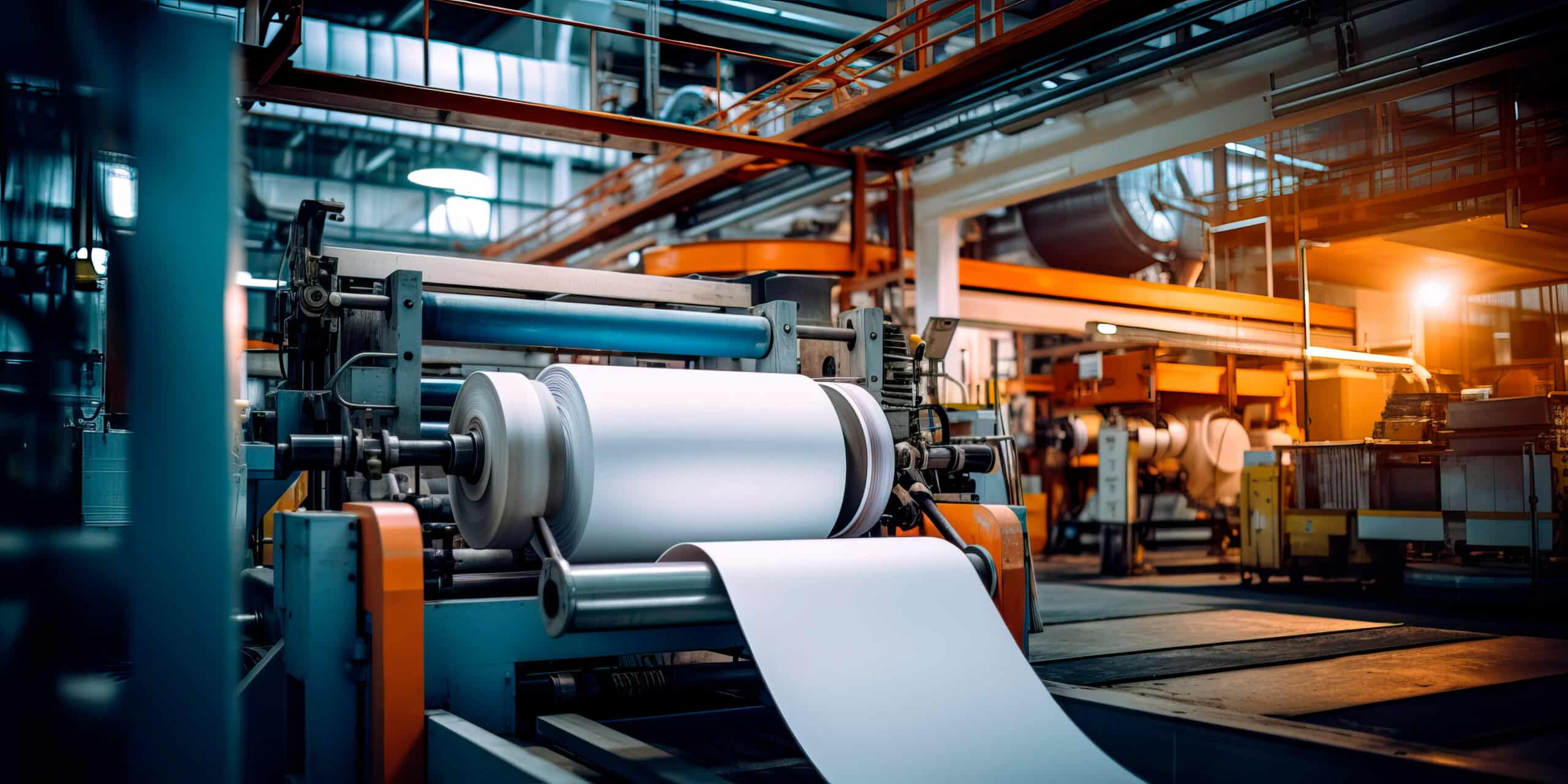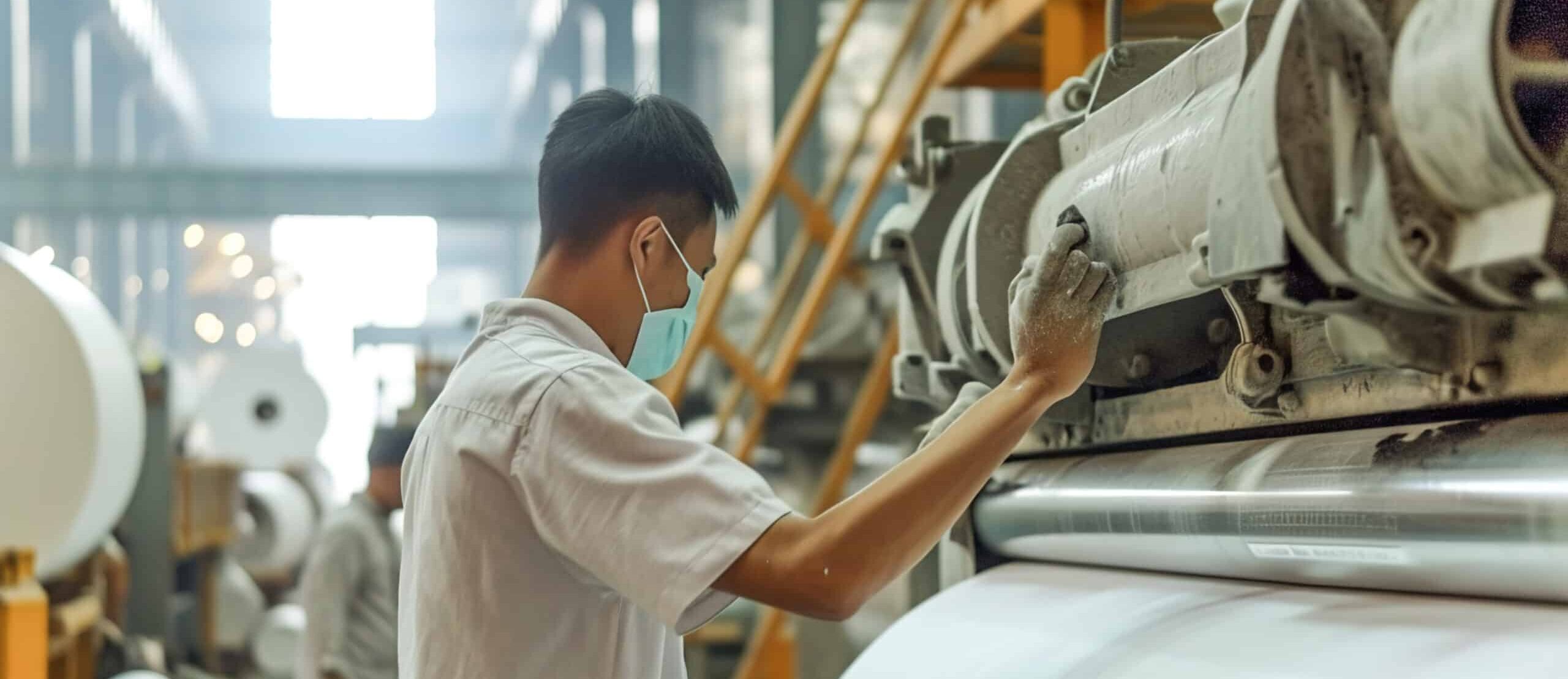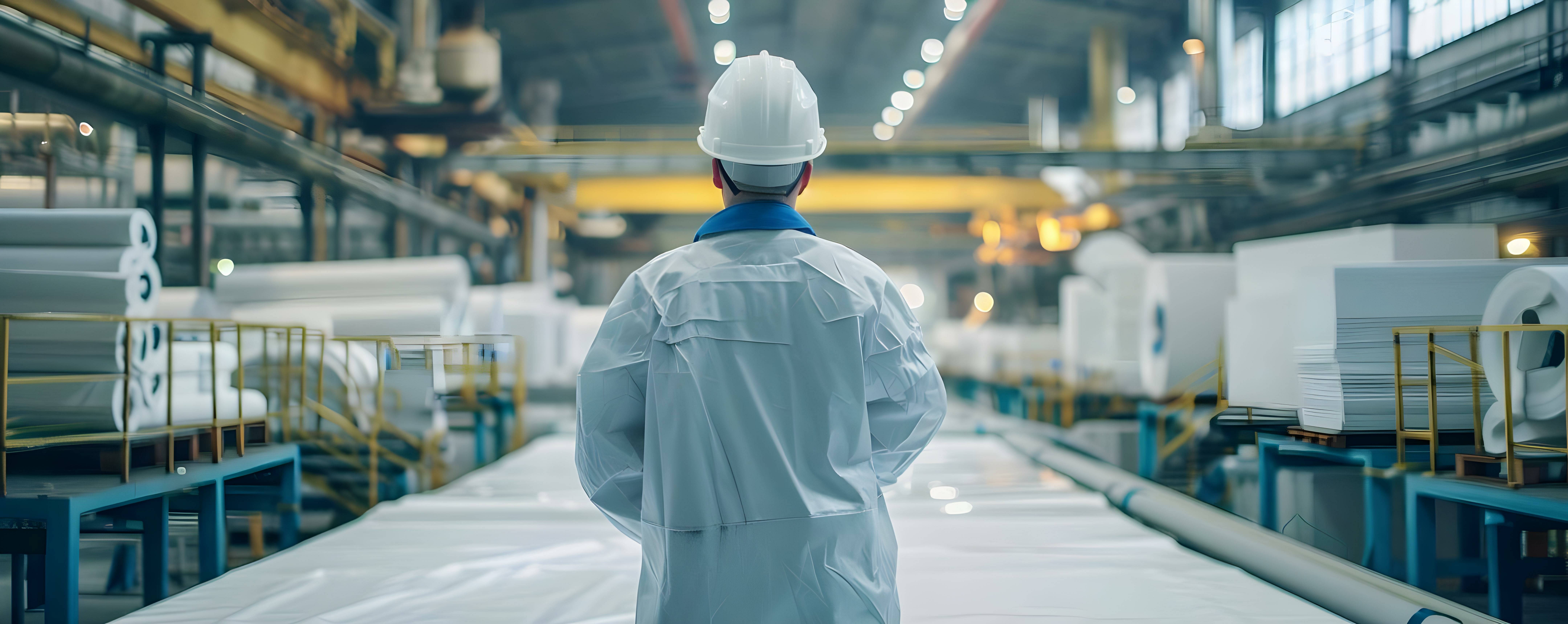March 22, 2024 7 min read

Navigating the Papermaking Process: A Step-by-Step Guide
Industry:
Solution:

Paper—a material so universally present in our daily lives that its significance may often go unnoticed. From the pages of our favorite books to the packaging of our online deliveries, paper plays a vital role in shaping the world around us. But have you ever stopped to consider the papermaking process that the Pulp and Paper industry’s workforce undertakes each day? It’s a scientific process that transforms trees into the many types of paper products we use every day and remains a cornerstone of countless industries worldwide.
Introduction to the Industrial Papermaking Process
Today, paper is primarily sourced from sustainably managed forests and recycled paper, with approximately 80% of mills in the United States utilizing recycled paper alongside traditional sources. Recycling has long been integral to papermaking, with mills repurposing used paper into various products, including newspapers, notebooks, cardboard, and more. Additionally, paper mills may incorporate manufacturing leftovers from sawmill operations into their production processes, further enhancing sustainability efforts.
To further understand the process of papermaking, its necessary to investigate the five essential stages of paper production, explore the basic processes involved, discuss emerging trends in the industry, and underscore the critical importance of training for efficiency and sustainability.
Understanding the Five Stages of Papermaking
The papermaking process can be broken down into five distinct stages, each playing a crucial role in transforming raw materials into the versatile paper materials we use every day.
Stage 1: Preparation of the Raw Material
This stage involves sourcing and preparing the primary raw material for paper production, typically wood pulp or recycled paper. The raw material undergoes various treatments to remove impurities and ensure consistency in quality.
Stage 2: Pulping
Pulping is the process of breaking down the raw material into a fibrous pulp. This can be achieved through mechanical or chemical means, resulting in a slurry-like mixture ready for further processing.
Step 3: Formation of the Sheet
Once the pulp is prepared, it’s time to form it into a continuous sheet. This is typically done on a large machine called a paper machine, where the pulp is spread evenly across a moving mesh screen, allowing water to drain away and fibers to bond together.
Step 4: Pressing and Drying
After formation, the newly formed sheet undergoes pressing to remove excess water and enhance its density. It’s then passed through drying cylinders or heated rollers to evaporate remaining moisture, resulting in a sturdy, dry sheet of paper.
Step 5: Finishing and Coating
In this final stage, the paper may undergo additional treatments to achieve specific properties or finishes. This could include coating for improved printability, sizing to control absorbency, or surface treatments for added strength and durability.
Exploring the Basic Processes of Papermaking
The basic papermaking process encompasses a wide array of techniques and technologies, each contributing to the efficiency and quality of the final product. Some of the main processes used in the production of paper include:
- Chemical Pulping: Involves the use of chemicals to break down lignin and separate fibers from the raw material.
- Mechanical Pulping: Relies on mechanical force to separate fibers, resulting in coarser paper suitable for products like newsprint.
- Recycling: The process of reusing paper fibers from discarded materials, reducing the need for virgin pulp and minimizing environmental impact.
- Bleaching: Used to whiten paper and remove impurities, ensuring a clean and bright final product.
- Paper Coating: Applying various coatings to the paper surface to enhance print quality, water resistance, or other desired properties.
Trends in the Papermaking Industry
Like other manufacturing industries, the paper manufacturing industry is constantly evolving, driven by technological advancements, shifting consumer preferences, and environmental considerations.
Some notable trends shaping the industry include:
Trend 1: Sustainability
In response to mounting environmental concerns, sustainability has emerged as a central focus within the papermaking industry. As consumers become more conscientious about their ecological footprint, paper manufacturers have adopted sustainable practices to meet evolving expectations.
One of the keys of this trend is the emphasis on responsible sourcing of raw materials. With deforestation posing a significant threat to global ecosystems, paper companies are shifting towards obtaining wood from responsibly managed forests.
Moreover, sustainability in the papermaking process extends beyond sourcing practices. Companies are actively seeking ways to minimize their environmental footprint throughout the production process. This includes initiatives to reduce water and energy consumption, thereby mitigating the industry’s impact on natural resources and climate change. Advanced technologies, such as water recycling systems and energy-efficient machinery, play a pivotal role in achieving these goals.
Trend 2: Bio-based Materials
As interest in further utilizing renewable and biodegradable materials grows, there’s a growing emphasis on exploring alternative raw materials, such as agricultural residues or algae, to supplement or replace traditional wood pulp.
For example, scientists have developed recyclable pollen-based paper that can be used multiple times. The printer-ready pollen paper could become another eco-friendly alternative to conventional paper. This type of sustainability-focused innovation represents the paper industry’s focus on conserving resources, reducing waste, and minimizing environmental impact.
Trend 3: Digitalization
The adoption of digital technologies, such as automation and data analytics, is well underway and revolutionizing the process of papermaking, leading to greater efficiency, productivity, and quality control. That said, while 89% of large companies globally have a digital and AI transformation underway, they have only captured 31% of the expected revenue lift and 25% of expected cost savings from the effort.
In light of these challenges, the pursuit of digitalization remains a worthwhile effort for several reasons:
- Competitive advantage. Embracing digital technologies like automation and data analytics is essential for staying competitive in today’s fast-paced market.
- Efficiency. Companies that successfully explore integrating digital transformation into their operations stand to gain significant advantages in terms of efficiency, productivity, and quality control.
Overall, while the statistics may seem daunting, they underscore the vast potential for improvement and optimization. The fact that a substantial portion of the expected revenue lift and cost savings from digital transformation remains untapped suggests there’s ample room for growth and innovation.
To further empower adoption within your paper manufacturing plant, check out the 10 new digital transformation sort microlearning online courses available in our Professional Development eLearning Library.
Professional Development eLearning Library
Accelerate your employee's career growth and development as they seek to enhance their knowledge and skills
Explore Courses
The Importance of Training for Efficiency
In the paper manufacturing industry, ongoing training and education are essential for maintaining efficiency, ensuring product quality, and fostering innovation. Comprehensive training programs for product operators, maintenance technicians, quality control technicians and more can provide employees with the knowledge and skills they need to:
- Optimize Processes. By understanding the job skills and safety best practices needed to fulfill their papermaking responsibilities, employees can identify opportunities for reducing downtime and improving productivity.
- Ensure Quality Control. Proper training equips employees with the expertise to monitor and control various parameters throughout the production process, such as pulp consistency, moisture content, and paper thickness, ensuring consistent quality and meeting customer specifications.
- Adapt to Technological Advances. With rapid advancements in technology, up-to-date online training specific for paper manufacturers helps employees stay abreast of the latest innovations and best practices, maximizing the benefits of new equipment and systems. Papermaking courses enable employees to familiarize themselves with equipment and systems.
- Promote Safety and Compliance. Training programs also play a vital role in promoting workplace safety and compliance with regulatory requirements, reducing the risk of accidents, ensuring environmental responsibility, and keeping the health and safety of your papermaking manufacturing team at the forefront.
Ready to enhance your team’s skills and efficiency? Explore our comprehensive online training courses for Pulping, Paper Manufacturing, Tissue Manufacturing, and Corrugated Manufacturing or connect with our paper manufacturing experts today!
Why Paper Manufacturers Use Vector Solutions’ eLearning
With over 20 years of experience serving the papermaking industry, we understand that navigating the papermaking process requires a deep understanding of its fundamental stages and processes, as well as an awareness of emerging trends and best practices.
By investing in training and on-going education, paper manufacturers empower their workforce to enhance job skills and drive efficiency and organizational sustainability.
Request a demo today to learn more about our industry-leading eLearning and training management solutions.










